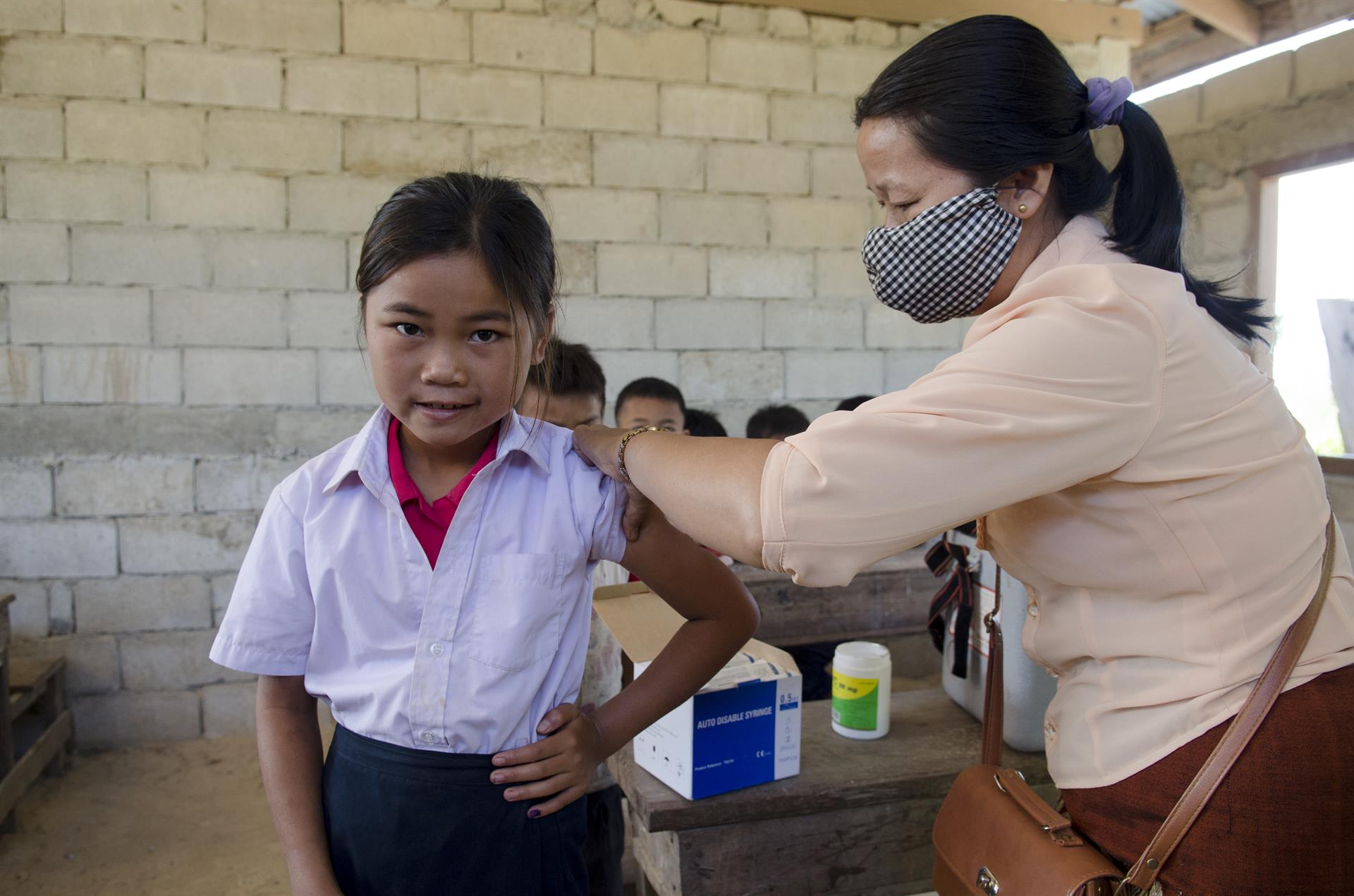
A health worker inject measles and rubella vaccine.
Since 2012, Lao PDR has made significant progress expanding routine immunization nationwide, including adding vaccines against pneumococcal infection, Japanese encephalitis and human papillomavirus (HPV) to the existing routine immunization schedule.
Vaccinations are delivered primarily via community health centres, and schools, with significant outreach efforts and a robust (but occasionally fragmented) infrastructure network. Prior to the COVID-19 pandemic, coverage among children for routine vaccinations was around 85–95%, with gaps related to hard-to-reach areas, disadvantaged populations, vaccine hesitancy and other issues.
Unfortunately, COVID-19 and its associated disruptions caused significant interruption to routine vaccination. An assessment of 2021 coverage showed a 10% drop in one common vaccine compared to the pre-pandemic period, in addition to declines in other vaccines.
Between its launch in 2021 and October 2022, COVID-19 primary series vaccination coverage was around 78% of the population, but slowed, with gaps continuing among vulnerable groups, especially elderly and people with underlying conditions. Addressing these gaps remained a key focus for the Ministry of Health, WHO and development partners.
Results
- By February 2024, 78% of the total population in Lao PDR had received the COVID-19 vaccine primary series. As of February 2024, 86.5% of people had received at least one dose of COVID-19 vaccine while over 33% had received one booster dose.
- 99.3% of the healthcare workforce have received the COVID-19 primary vaccine series, as had 75.9% of elderly people.
- To protect girls and women against cervical cancer, Human papillomavirus vaccination was introduced in 2020, and is available to girls aged 10–16 years old, regardless of their school enrolment status. The government decided to switch from 2-dose to 1-dose schedule per WHO updated recommendation.
- Lao PDR expanded its target population for COVID-19 vaccination to include children as young as 5 years old.
- Significant improvements have been made in healthcare worker capacity for various immunization areas, including vaccination safety and responding to adverse events following immunization.
Our partners
The Government of Australia through the Department of Foreign Affairs and Trade (DFAT) and Australian Aid
The Government of Germany through the Bundesministerium für Gesundheit
The Government of the United States of America through the Centers for Disease Control and Prevention (CDC) and USAID
Gavi, the Vaccine Alliance
UNICEF

